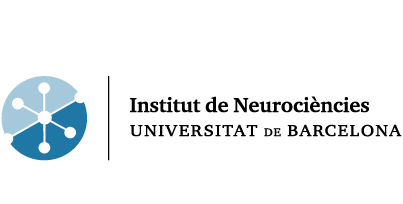SOLEDAD ALCÁNTARA HORRILLO
Position: Associate Professor
Contact details
Dr. Soledad Alcántara Horrillo
Department of Pathology and Experimental Therapeutics
Faculty of Medicine, Feixa LLarga s/n
08907 L’Hospitalet de Llobregat (Spain)
+34 934024288
salcantara (at) ub.edu
Research Interests
During nervous system development, genetic and environmental programs interplay to allow the sequential generation of neurons and glia and the initial establishment of the neural circuitry. At the end of this period, molecular sensors of electric activity (like BDNF) modulate neuronal and glial maturation, survival and the final wiring of the system. Effective regeneration after brain damage may require the reactivation of neurogenic neurovascular niches and the mechanisms of development required to replace the damage tissue.
The Neural Development group is focused in three main aspects of CNS development:
- Identification of BDNF signalling effector genes as targets for the regulation of cerebral cortex morphogenesis, pathology and regeneration.
- Regulation of the neurogenic neurovascular niche during development and its modulation trough metabolic and biomaterial approaches to promote CNS regeneration after an injury.
- Identification of prognostic or progression biomarkers in paediatric neuropathology affecting synaptic development or after an acquired brain damage.
Technologies / methods
- We have implemented in vivo and in vitro techniques including chirurgical techniques and in uteri intracerebral injection and gene transfer by electroporation, in vivo neural transplants and biomaterial implants, cultures of primary neural cells and explants, in vitro migration assays in 2D and 3D matrices, video time lapse analysis, etc. In addition, we have wide experience in protein analysis by immunohistochemistry and Western blot, as well as in molecular biology techniques as cDNA cloning, mRNA purification, RT PCR and real time PCR, and in situ mRNA hybridization.
Highlighted publications
· Alvarez Z, Hyroššová P, Perales JC, Alcántara S. (2016) Neuronal Progenitor Maintenance Requires Lactate Metabolism and PEPCK-M-Directed Cataplerosis. Cerebral Cortex, 26:1046-58. Epub 2014 Dec 1.
· Alvarez Z, Castano O, Castells AA, Mateos-Timoneda MA, Planell JA, Engel E, Alcantara, S (2014) Neurogenesis and vascularization of the damaged brain using a lactate-releasing biomimetic scaffold. Biomaterials, 35:4769-4781.
· Alvarez, Z.; Mateos-Timoneda M.A.; Hiroššová, P.; Castaño O.; Planell, J.A.; Perales, J.C.; Engel, E.; Alcántara, S. (2013) The effect of the composition of PLA films and lactate release on glial and neuronal maturation and the maintenance of the neuronal progenitor niche. Biomaterials, 34:2221-2233.
· Mattotti, M.; Alvarez, Z.; Ortega, J.A.; Planell, J.A.; Engel, E.; Alcántara, S. (2012) Inducing functional radial glia-like progenitors from cortical astrocyte cultures using micropatterned PMMA. Biomaterials, 33:1759-1770.
· Ortega JA, and Alcántara S (2010): BDNF/MAPK/ERK-induced BMP7 expression in the developing cerebral cortex induces premature radial glia differentiation and impairs neuronal migration. Cerebral Cortex, 20:2132-2144.



